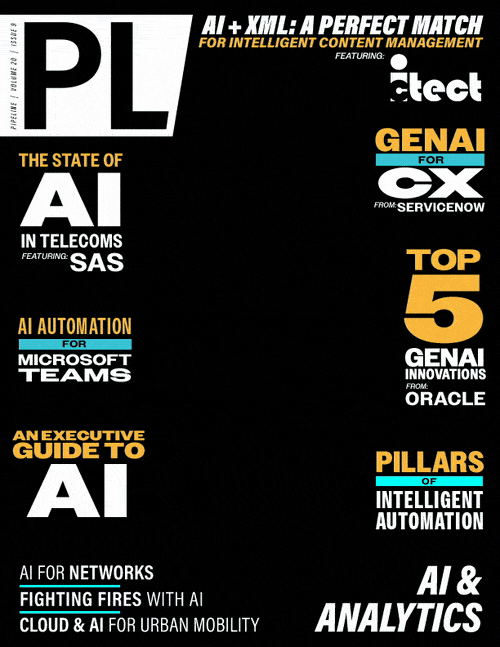Transforming Telecommunications:
The Role of AI in Modern Networks
By: Sameh Yamany

Artificial intelligence is not only changing the game, it’s changing the rules by which the game is played. This is true of countless industries, including telecommunications. The global AI in telecommunications market size was estimated at $1.3 billion in 2023, and is expected to hit more than $40 billion by 2033.
While much is said of the impact of AI on customer service and how network operators ― particularly Mobile Virtual Network Operators (MVNOs) ― are leveraging it to personalize their offerings and win subscribers, the real story is how AI is reshaping the fundamentals of network connectivity and coverage. From the pursuit of ubiquitous broadband and the rollout of 6G, to the vital role of satellite communications and GPS in critical industries such as aviation and energy, connectivity has become the central pillar on which everything now depends. If that pillar lacks structural integrity or isn’t robust enough to support the services depending on it, the results can vary from minor inconvenience to catastrophic disruption.
Network integrity can be threatened in numerous ways, from natural disasters such as earthquakes or floods, human error when it comes to network configurations or ineffective network testing, or cyberattacks that aim to hijack or sever network connections. According to the International Energy Agency, the number of internet users worldwide has more than doubled in the last decade, and as new connectivity-reliant use cases continue to emerge such as autonomous vehicles, biometric healthcare monitoring, and anything powered by generative AI, the demand placed on networks is only going to increase. Networks need to be able to cope with that demand, which means they need to be designed with an eye on the future, thoroughly tested, and well maintained and protected after deployment.
About Promptlink - www.promptlink.com
Promptlink Communications is an industry innovator in network noise detection and CPE testing, with 15 patents demonstrating the innovation and breakthrough technology Promptlink
has developed. One key innovation has led to solving the puzzle of localizing and repairing ingress and other types of HFC noise and impairments. Machine learning and a huge library
of labeled data is used to identify the type of noise or other impairment and sends the specific location directly to a technician, with no analysis required. Promptlink’s Network
NoiseHawkAI provides a fully-automated solution for localizing, diagnosing and repairing Upstream Noise and other impairments. NoiseHawkAI automatically localizes a point in your
network, provides instructions to find and fix the issue, and validates the fix. All steps are fully automated, using the latest AI technology to send all info straight to a
smartphone. Promptlink's patented and award-winning solution is one-of-a-kind. This is only one of many unique solutions provided by Promptlink.
That’s where AI comes in. As the demands placed on networks become greater and more complex, the ability of AI to manage, test, optimize, and secure network systems has proven invaluable. From predictive maintenance and assisting field technicians with network deployment, to lab-based testing, security, and the dynamic allocation of network resources, AI is helping to ensure that our networks remain robust, resilient, and fit for purpose long into the future.
AI in Network Operations
Connectivity is not a binary state. The quality of connectivity, the movement of traffic, and the likelihood of network failure all impact its reliability and suitability for various scenarios. Risk is a huge factor in critical industries, so the networks they depend on must be designed, deployed, and managed in a way that mitigates this risk as much as possible. For instance, timing and synchronization are vital for 5G networks. If a radio clock loses synchronization, then interference between cells is highly likely, which can lead to wide scale disruption of connectivity services. This was a minor issue for previous generations (2G, 3G, 4G), but the stringent performance requirements of 5G ― which mandates nanosecond timing between various elements in the radio access network (RAN) ― mean that for 5G, timing literally is everything. Regulations have been set out to ensure that networks meet this requirement for “keeping time,” and AI is making those targets easier to meet, simplifying deployment and allowing for more thorough testing in zero-risk, lab-based environments.
AI’s ability to analyze vast amounts of data in real-time also allows for predictive maintenance, crucial in preventing network failures before they occur. For example, by monitoring network
performance continuously, AI systems can recognize unusual patterns that traditional fault systems fail to detect, and that may point to critical issues in need of immediate attention. This
proactive approach means potential problems can be identified and resolved swiftly, allowing human teams to target their resources more effectively while ensuring minimal disruption to
service.




















